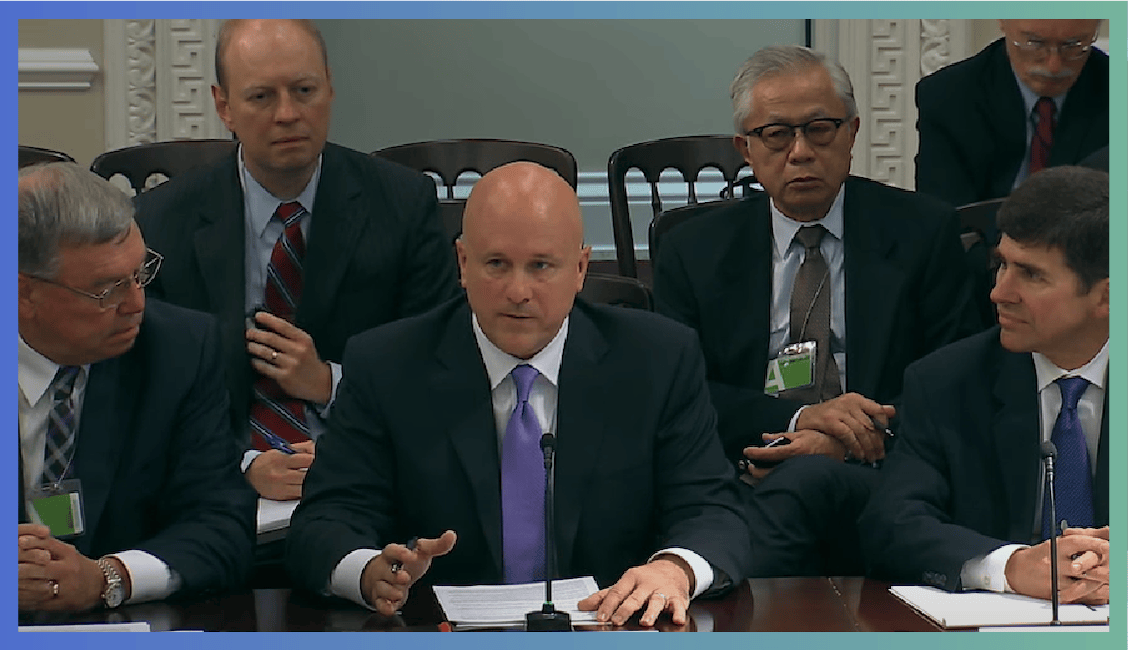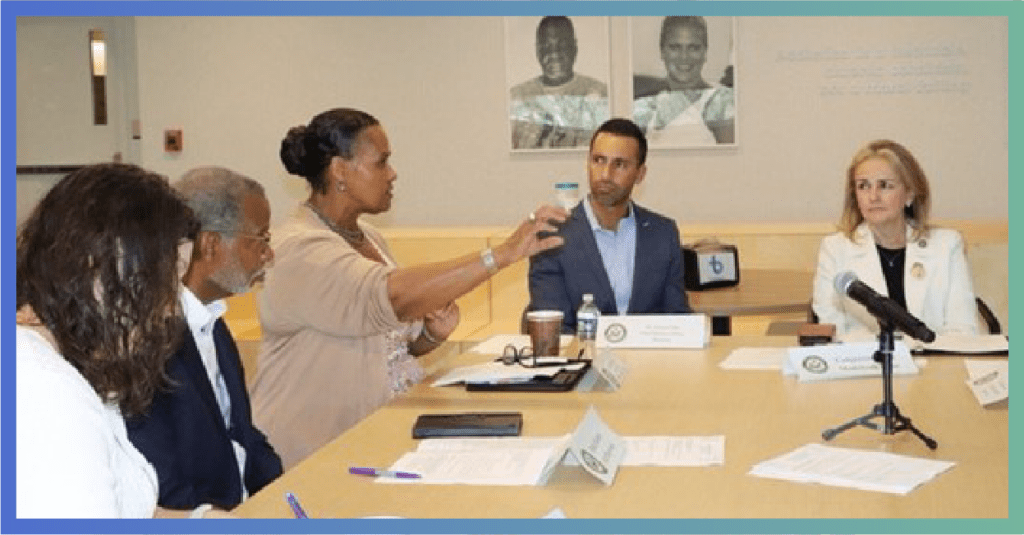Breaking Down Barriers and Making Progress for Patients

I began my career in the pharmaceutical industry with a passion for innovation and strong desire to make a meaningful difference in others’ lives. That determination has led me to this moment – leading the team at Braeburn since 2017 in a bold pursuit to transform the management of opioid use disorder (OUD), a complex, chronic disease that affects around 2.7 million people in the U.S. alone. [1, 2]
Over these last six years, I’ve been encouraged as treatment options for OUD have expanded, providing hope for the patients, parents, friends and neighbors who are impacted by OUD. [3] Yet, sadly, due to structural, societal and individual barriers, accessing medical and social support remains out of reach for far too many patients who need it. When I first learned that an estimated 87 percent of people who could benefit from an evidence-based treatment for OUD do not receive it, I found it devastating. [4] Access to MOUD, in conjunction with counselling, compassionate care and social support, can provide opportunities for recovery that may help patients struggling with OUD reengage with their community, their profession and their friends and family. That’s why I stand unwaveringly committed to building on the current momentum, working alongside advocates, policymakers and others in the OUD community to break down barriers to treatment, services and recovery for people with OUD.
Shame, misconceptions and negative attitudes held by individuals, healthcare professionals and the general public often deter people living with OUD from seeking treatment or reduce persistence on treatment.
Three Key Areas of Current and Future Progress in OUD Advocacy
- Access to Treatment. The Consolidated Appropriations Act marked a significant milestone for improving access to MOUD, with provisions (P.L. 117-328) eliminating the requirement for qualified practitioners to obtain a special waiver, often called the “X-waiver,” to prescribe some MOUD. [5, 6] In December 2022, the Substance Abuse and Mental Health Services Administration (SAMHSA) also proposed rules to make it easier for people with OUD to take some treatments at home, aiming to improve patients’ access to and experiences with MOUD through opioid treatment programs. [7] Policy changes like these are critical to improving access to treatment and care for OUD, and I hope that others will join the OUD community in fiercely advocating for continued action. Additionally, the COVID-19 pandemic brought about changes that allowed for better use of telehealth in OUD care. Telehealth has become a valuable tool for addiction clinicians and patients, increasing access to care, improving adherence to treatment and lowering the chances of medically-treated overdose. [8] These advances have been an important step toward making MOUD accessible to everyone regardless of economic status, ability or location.
- Access to a Continuum of Care. We must equip people with OUD with continued quality care, tools and information to create positive change and potentially save lives. The Substance Abuse and Mental Health Services Administration (SAMHSA) initiated the State Opioid Response (SOR) grant program in 2022 to address the opioid crisis and provide resources to states and territories. SOR funding can be a powerful tool to make evidence-based prevention, treatment and recovery support services for OUD and other substance use disorders available to those who need them. In fiscal year 2022, SAMSHA distributed $1,439,500,000 to 59 states and U.S. territories with the goal to reduce unmet treatment needs and opioid-related deaths across America. [9] This funding supports state-wide efforts to provide treatment and services to local residents in communities that have been hit hardest by the opioid crisis.
- Addressing Stigma. These recent policy changes have helped to reduce some physical barriers to treatment access for people with OUD, but they have also helped to mitigate one of the biggest challenges to seeking treatment – stigma. I am acutely aware that shame, misconceptions and negative attitudes held by individuals, healthcare professionals and the general public often deter people living with OUD from seeking treatment or reduce persistence on treatment. [10, 11] My team at Braeburn and I are committed to ending stigma to help people impacted by OUD live their best lives. We are inspired by the passionate work of advocates and hope that others will join us in working to de-stigmatize OUD to positively impact the lives of millions of parents, grandparents, children, friends and co-workers.

Joshua Cohen, MD, MPH, FAHS, Chief Medical Officer at Braeburn, participates in a discussion with U.S. Representative Madeleine Dean and Pennsylvania State Senators Amanda Cappelletti and Art Haywood
Looking Ahead with the OUD Community
Unfortunately, despite advancements in treatment for OUD and efforts to destigmatize the disease, significant challenges remain for the OUD community. There is a need for education among current and future healthcare providers to better understand the disease, the role of medications and services, and the various options that are available in these areas. [11] Logistical challenges, including insurance and regulatory requirements, must be navigated in order to assure that treatment options and services are available to healthcare providers for their patients. [12]
I know that the OUD community is strong, passionate and determined, and I hope that, together, we can continue to inspire innovation in OUD treatment and care, eliminate stigma and misconceptions, and make it easier for people with OUD to access treatment and services that can help them to begin and continue their recovery journey.
Article References:
- American Psychiatric Association. Opioid Use Disorder. https://www.psychiatry.org/patients-families/opioid-use-disorder. Accessed May 2023.
- Centers for Disease Control and Prevention. Opioid Use Disorder. https://www.cdc.gov/dotw/opioid-use-disorder/index.html. Accessed May 2023.
- U.S. Food & Drug Administration. FDA approves first once-monthly buprenorphine injection, a medication-assisted treatment option for opioid use disorder. https://www.fda.gov/news-events/press-announcements/fda-approves-first-once-monthly-buprenorphine-injection-medication-assisted-treatment-option-opioid. Accessed May 2023.
- Krawczyk N, Rivera BD, Jent V, Keyes KM, Jones CM, Cerdá M. Has the treatment gap for opioid use disorder narrowed in the U.S.?: A yearly assessment from 2010 to 2019″. Int J Drug Policy. 2022 Dec;110:103786. doi: 10.1016/j.drugpo.2022.103786.
- Substance Abuse and Mental Health Services Administration. SAMHSA Applauds Expansion of Access to Medication for Opioid Use Disorder (MOUD). https://www.samhsa.gov/newsroom/statements/2023/samhsa-applauds-expansion-access-moud. Accessed May 2023.
- U.S. Department of Justice Drug Enforcement Administration. Dear Registrant Letter. https://www.deadiversion.usdoj.gov/pubs/docs/A-23-0020-Dear-Registrant-Letter-Signed.pdf. Accessed May 2023.
- Substance Abuse and Mental Health Services Administration. SAMHSA Proposes Update to Federal Rules to Expand Access to Opioid Use Disorder Treatment and Help Close Gap in Care. https://www.samhsa.gov/newsroom/press-announcements/20221213/update-federal-rules-expand-access-opioid-use-disorder-treatment. Accessed May 2023.
- American Society of Addiction Medicine. Optimizing Telehealth Access to Addiction Care. https://www.asam.org/advocacy/public-policy-statements/details/public-policy-statements/2022/10/12/public-policy-statement-on-optimizing-telehealth-access-to-addiction-care. Accessed May 2023.
- Substance Abuse and Mental Health Services Administration. State Opioid Response Grants. https://www.samhsa.gov/grants/grant-announcements/ti-22-005. Accessed July 2023.
- National Academies of Sciences, Engineering, and Medicine; Health and Medicine Division; Board on Health Sciences Policy; Committee on Medication-Assisted Treatment for Opioid Use Disorder; Mancher M, Leshner AI, editors. Medications for Opioid Use Disorder Save Lives. Washington (DC): National Academies Press (US); 2019 Mar 30. 5, Barriers to Broader Use of Medications to Treat Opioid Use Disorder. Available from: https://www.ncbi.nlm.nih.gov/books/NBK541389/.
- Volkow ND. Stigma and the Toll of Addiction. N Engl J Med. 2020;382(14):1289-1290. doi:10.1056/NEJMp1917360.
- University of Pennsylvania Leonard Davis Institute of Health Economics. Lowering the Barriers to Medication Treatment for People with Opioid Use Disorder. https://ldi.upenn.edu/our-work/research-updates/lowering-the-barriers-to-medication-treatment-for-people-with-opioid-use-disorder. Accessed May 2023.